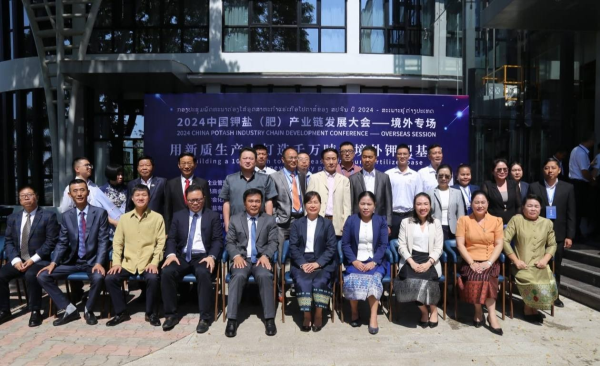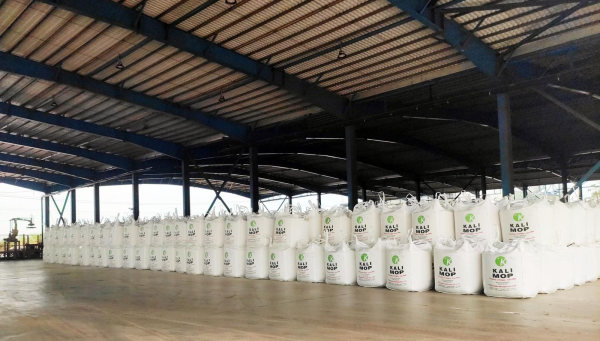KPL
With an estimated 133.62 billion tons of potassium chloride reserves, the Lao PDR is projected to become the world’s third-largest potash fertilizer producer, following Russia and Canada.

(KPL) With an estimated 133.62 billion tons of potassium chloride reserves, the Lao PDR is projected to become the world’s third-largest potash fertilizer producer, following Russia and Canada.
In the first nine months of 2024, Laos’ production and sale of potash products with 95% purity reached 12.22 million tons, valued at USD 2.95 billion.
“Laos is poised to become a primary hub for the Asian potash fertilizer market,” stated Mr. Yao Bin, Chairman of the Lao Chinese Chamber of Commerce. “Potash produced locally can be directly transported to Asia-Pacific countries via the Laos-China railway.”
The launch of the Laos-China railway in December 2021 has bolstered Laos' strategic position, enhancing its ability to support environmentally sustainable potash production while meeting the rising demand across Asia.
The global market for potash, a key component in potassium fertilizer, is growing steadily, with demand averaging between 60-70 million tons annually.

The Asia-Pacific region, in particular, relies heavily on potassium chloride imports due to limited domestic resources. China, the largest consumer of potassium fertilizer worldwide, used approximately 1.87 billion tons of potassium fertilizer in 2023 alone, importing around 1.15 billion tons of potassium chloride.
With rich potash deposits, especially in Vientiane, Vientiane Province, Khammuan, and Savannakhet, Laos aims to increase its production capacity to meet both domestic and regional needs. Potash is a crucial mineral for the production of agricultural fertilizers and serves as a raw material for various industries.
According to Laos’ Mineral Development Strategy for 2030 and Vision 2040, three NPK fertilizer production plants are planned for construction, with one in Vientiane and two in Khammuan Province. Plans also include establishing at least two additional bromine salt production plants.
The Lao government is currently assessing the economic and technical feasibility of these mineral resources to support future industrial operations.
Mr. Chansaveng Bounyong, Deputy Minister of Energy and Mines, reported that the government has authorized 18 companies to conduct exploration, surveys, mining, and processing of potash.
Of these, five companies are in the exploration and survey phase with five projects, four companies are conducting economic-technical feasibility studies across four projects, and nine companies have obtained mining and processing licenses for 11 projects. These licensed activities cover over 162,200 hectares across Vientiane, Vientiane Province, Khammuan, and Savannakhet.
The 2024 China Potash Industry Chain Development Conference, held in Vientiane on November 3, 2024, brought together key figures, including Deputy Minister of Energy and Mines Mr. Chansaveng Bounyong and Lao Chinese Chamber of Commerce Chairman Mr. Yao Bin, along with representatives from various government and industry stakeholders.

KPL